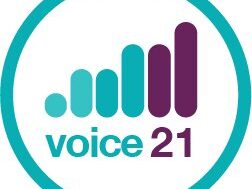Webinar: Supporting young multilingual pupils in early years settings
This is the second webinar in a series of joint events between NALDIC, the National Association for Language development in the Curriculum, and the Chartered College of Teaching, the professional body of teachers in England.
During this webinar, Prof Victoria Murphy (Professor of Applied Linguistics, University of Oxford; Chair, NALDIC) explored how multilingual pupils can be supported in early years settings. The webinar was chaired by Dr Lisa-Maria Muller (Education Research Manager, Chartered College of Teaching).
More and more children around the world are growing up with more than one language. A typical scenario for emergent multilingual children around the world is one where they speak a language in the home that is not the same as the dominant, society language, and importantly, not the language of formal education. These children are referred to as English as an Additional Language (EAL) in the UK. For many EAL children, their first experience with formal education marks their first sustained exposure to English, the dominant language.
In this webinar Prof Murphy talked about observed stages of language development in the dominant (second language) from research investigating young EAL children in early years settings. Prof Murphy then reviewed some of the research that has examined the role of the home language environment in supporting both the home, and dominant language. Teachers in early years settings have a powerful influence over the language development of all their pupils, and no less so for children with EAL. Prof Murphy therefore concluded by discussing the need for research which directly investigates different approaches to multilingual pedagogy aimed at identifying what constitutes best practice for young EAL pupils.
- learn more about the stages of language development in young children with EAL and the differences between typical bilingual development and language impairment
- develop a better understanding of the relationship between children’s first and second language development
- explore the role of the home environment in supporting language development
Find out more about the work of NALDIC and the latest issue of the EAL journal here.



